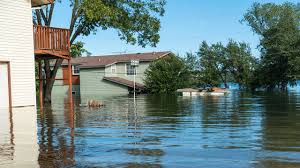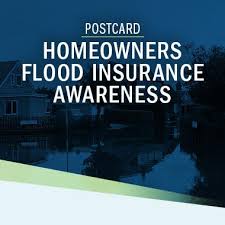
Why Your Home Insurance May Not Cover Flood Damage
When you think about protecting your home, having insurance gives a sense of security. But here’s a harsh truth many homeowners discover too late: Most standard home insurance policies do NOT cover flood damage.
Flooding is one of the most common and costly natural disasters, yet it’s often excluded from typical homeowner insurance. This gap can leave you facing huge repair bills and loss if floodwaters hit your property.
Here’s why flood damage coverage is often missing, what risks you really face, and how to make sure your home—and your wallet—are protected.
1. What Does Standard Home Insurance Cover?
Standard homeowner insurance usually protects against:
-
Fire
-
Theft
-
Windstorms or hail
-
Vandalism
-
Liability claims
However, flooding caused by rising water from heavy rain, overflowing rivers, or storm surges is typically excluded.
That means if water enters your home from outside sources and causes damage, your insurance policy likely won’t pay.
2. Why Is Flood Coverage Excluded?
Floods cause widespread damage and are highly unpredictable, which makes them expensive for insurers to cover.
-
Insurance companies often exclude flood damage because it can affect entire communities simultaneously.
-
The cost to insure against flood risk is very high and requires specialized coverage.
-
Instead, flood insurance is generally provided separately through government-backed programs or specialized private insurers.
3. What Is Flood Insurance and How Can You Get It?
The most common option for flood protection in the U.S. is the National Flood Insurance Program (NFIP), managed by FEMA.
-
NFIP offers flood insurance policies that cover damage to the structure and contents of your home.
-
Coverage limits are usually up to $250,000 for the building and $100,000 for personal property.
-
There’s typically a 30-day waiting period before flood coverage takes effect after purchase.
In addition to NFIP, some private insurers now offer flood insurance options, sometimes with more flexibility and higher coverage limits.
4. Who Needs Flood Insurance?
Flood risk isn’t just for coastal areas or known flood zones:
-
Heavy rains and flash floods can strike anywhere.
-
Even homes not in a designated floodplain can experience flooding.
-
Mortgage lenders usually require flood insurance if your home is in a high-risk flood zone.
Because flood damage can be financially devastating, experts recommend most homeowners consider purchasing flood insurance regardless of location.
5. Common Misunderstandings About Flood Coverage
-
“My homeowner’s insurance covers all water damage.”
No. Water damage from plumbing leaks or burst pipes is covered, but flooding from external water sources is not. -
“Flood insurance is too expensive or unnecessary.”
The cost varies widely and is often affordable compared to potential repair bills. The financial risk of no coverage is far greater. -
“I have insurance, so I’m fully protected.”
Without flood insurance, a flood can leave you underinsured or entirely uncovered.
6. Steps to Protect Your Home From Flood Damage
-
Check your current policy to see what’s covered.
-
Purchase flood insurance through NFIP or a private insurer.
-
Consider flood-proofing your home by installing barriers, sump pumps, or elevating electrical systems.
-
Keep important documents and valuables in waterproof containers.
-
Stay informed about local flood risks and alerts.
Final Thought
Flood damage is one of the costliest disasters homeowners face—and ignoring the gap in your coverage could be financially devastating.
Don’t wait until the water’s rising to find out your insurance won’t cover it. Understanding your policy and adding flood insurance where needed is the best way to protect your home and peace of mind.
Because when it comes to floods, preparation and coverage make all the difference.
